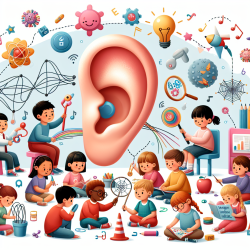Introduction
Obstructive Sleep Apnea (OSA) is a prevalent condition affecting approximately 10% of the adult population. It is characterized by repetitive upper airway collapse during sleep, which can lead to severe health complications if left untreated. Traditional methods for diagnosing OSA, such as polysomnography, are costly and complex, resulting in a significant number of undiagnosed cases. The study titled A pilot observation using ultrasonography and vowel articulation to investigate the influence of suspected obstructive sleep apnea on upper airway offers an innovative approach to screening for OSA using ultrasonography and vowel articulation.
Study Overview
This pilot study explores the potential of using ultrasonography combined with vowel articulation to assess the upper airway dimensions in individuals at risk for OSA. By analyzing vowel sounds and their corresponding upper airway dimensions, the study aims to provide a more accessible and cost-effective screening tool for OSA.
Methodology
The study involved 31 participants, divided into two groups based on their risk of OSA, as determined by the NoSAS score. Ultrasonography was used to measure the parasagittal anterior-posterior (PAP) diameter of the upper airway during the articulation of different vowels. Acoustic features of these vowel sounds were also analyzed to determine their correlation with the measured PAP diameters.
Key Findings
- The variation in PAP diameter from the vowel "/i/: See" to "/a/: Sah" was significantly smaller in individuals with a higher risk of OSA compared to controls.
- Acoustic features of vowel sounds differed significantly between high-risk OSA individuals and controls, aligning with ultrasonography findings.
- A machine learning model was developed to estimate PAP diameter from vowel features, achieving a correlation coefficient of 0.75, indicating high accuracy.
Implications for Practice
The study suggests that vowel articulation could be a valuable tool for simulating upper airway narrowing, providing a simple and effective method for differentiating individuals at high risk of OSA. This approach could be particularly useful in settings where traditional diagnostic tools are not feasible.
Encouraging Further Research
While the study presents promising results, further research is needed to validate these findings in larger populations and explore the potential for integrating this method into routine clinical practice. Speech-language pathologists and other practitioners are encouraged to consider the implications of these findings and contribute to ongoing research in this area.
Conclusion
The integration of ultrasonography and vowel articulation presents a novel approach to OSA screening, offering a potential pathway for more accessible and accurate diagnosis. By leveraging the power of acoustic analysis and machine learning, this method holds promise for improving patient outcomes and advancing the field of speech-language pathology.
To read the original research paper, please follow this link: A pilot observation using ultrasonography and vowel articulation to investigate the influence of suspected obstructive sleep apnea on upper airway.










